I imagine a student enters the class inside a bubble: their comfort zone. It may be large or small. It may be flexible or fragile. Either way, we all have a bubble. Our role as teachers is to offer students new experiences and insights, provide them with opportunities to see outside their bubble, and find methods to expand their comfort zone should they wish, or at least consolidate it. The way in which we as teachers approach this process can affect greatly the outcome, atmosphere and legacy of the class.

The first option begins with the teacher climbing inside the bubble. Say hi to the student and compliment their bubble. “Nice bubble kidda”. We get comfy together. Then, you can start to press the edges of it from the inside, encourage the student to do it too, nudge them towards the wall, have a contest to see who can make it grow faster. The bubble expands. Should they trust you enough, you can offer the student a pin, or a battering ram and show them how to burst the bubble, and expose them to the bigger picture. If they want, you can hold their hand and help them do it. However, they might not want to. They might give up, or lose interest in trying. Perhaps you end up doing it all for them.
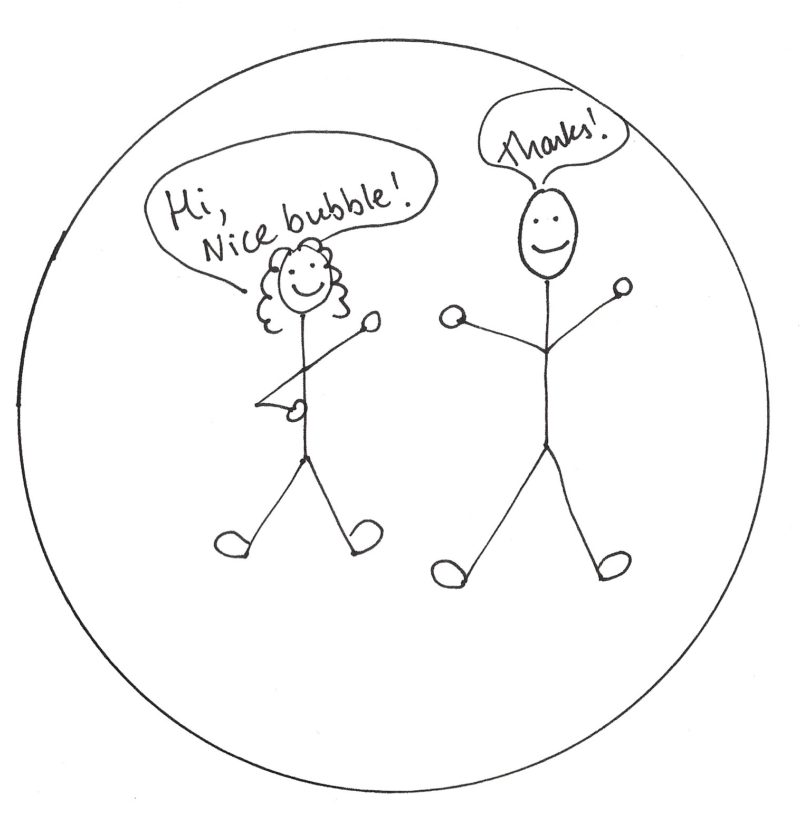
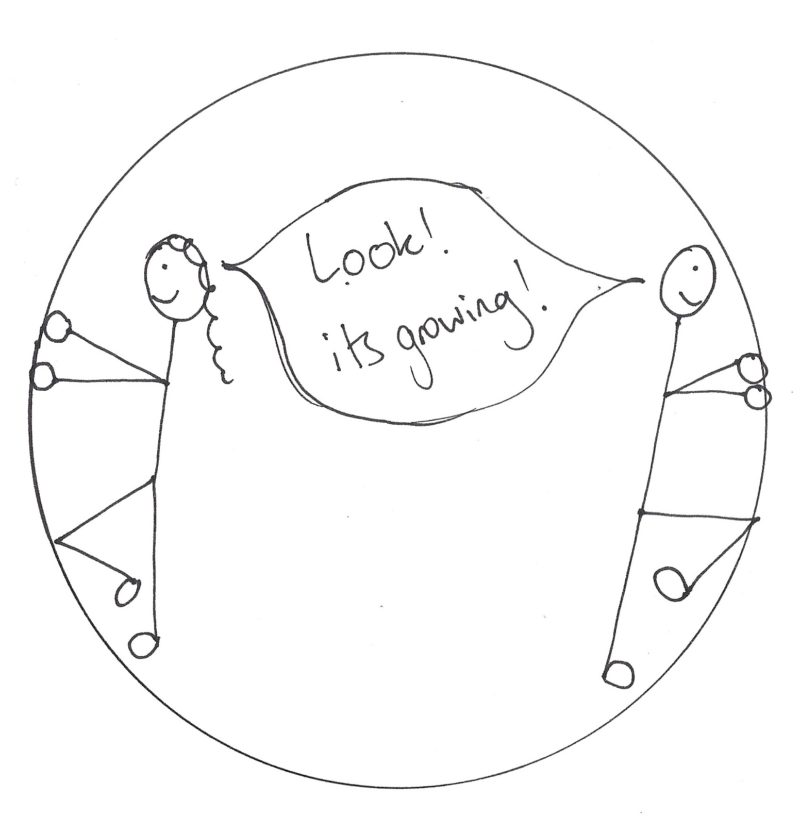
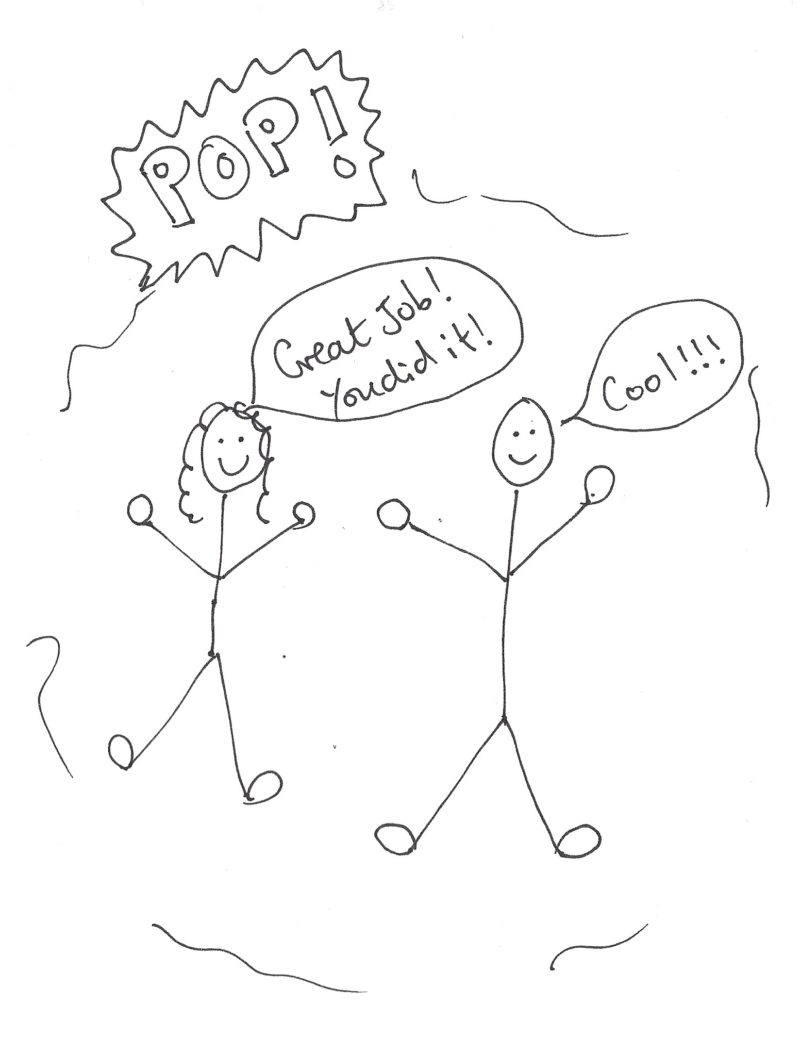
Option 2 begins with the teacher outside of the bubble. You demonstrate to the student what life is like outside of their bubble, and they view you through the bubble wall.
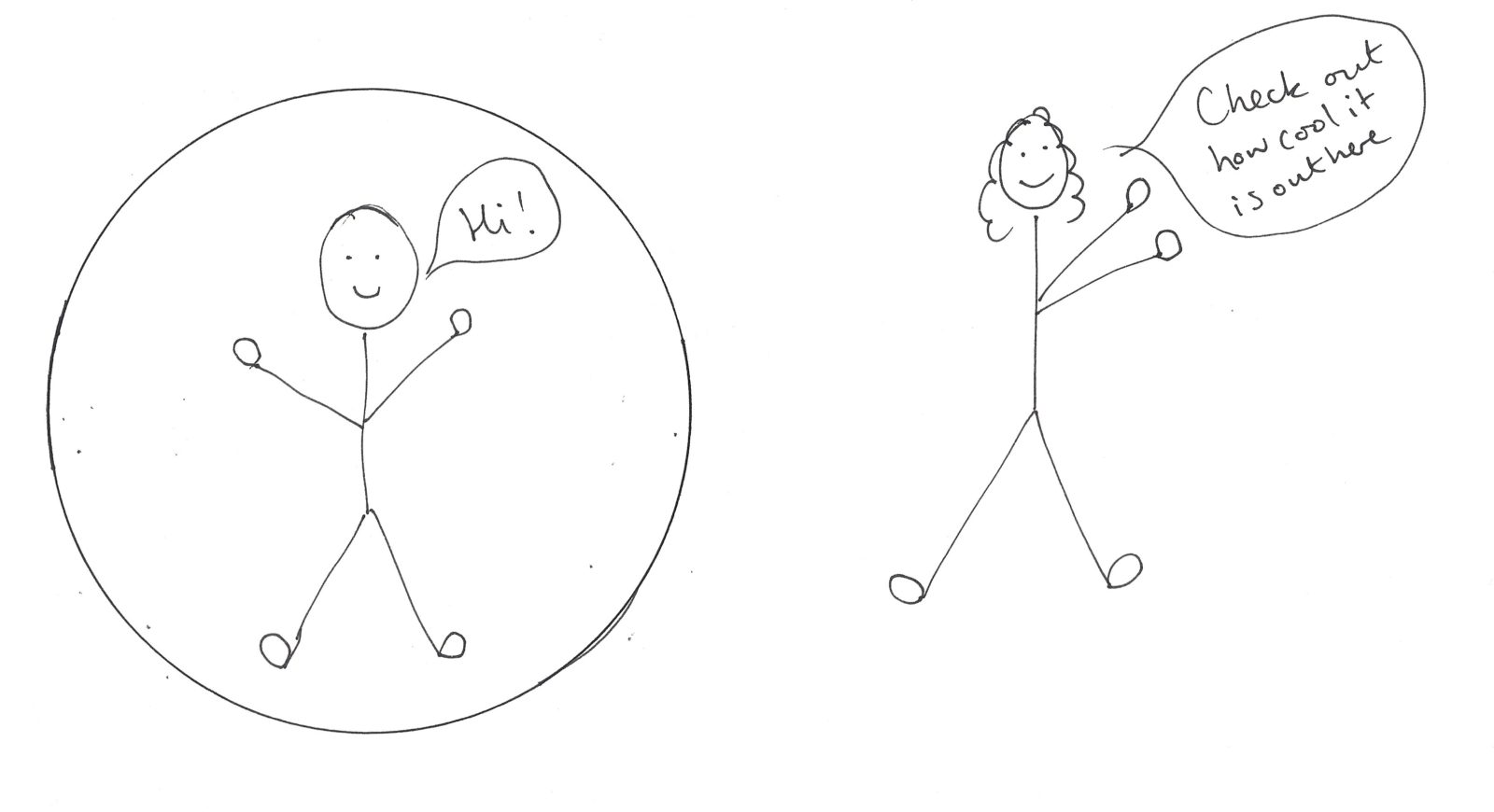
They press their face to it to try to get a better view. You can then reach in and offer your hand. They may take it, and you can give it a good tug, and pull them out of it. Alternatively, they may refuse, leaving them inside and you outside of the bubble.
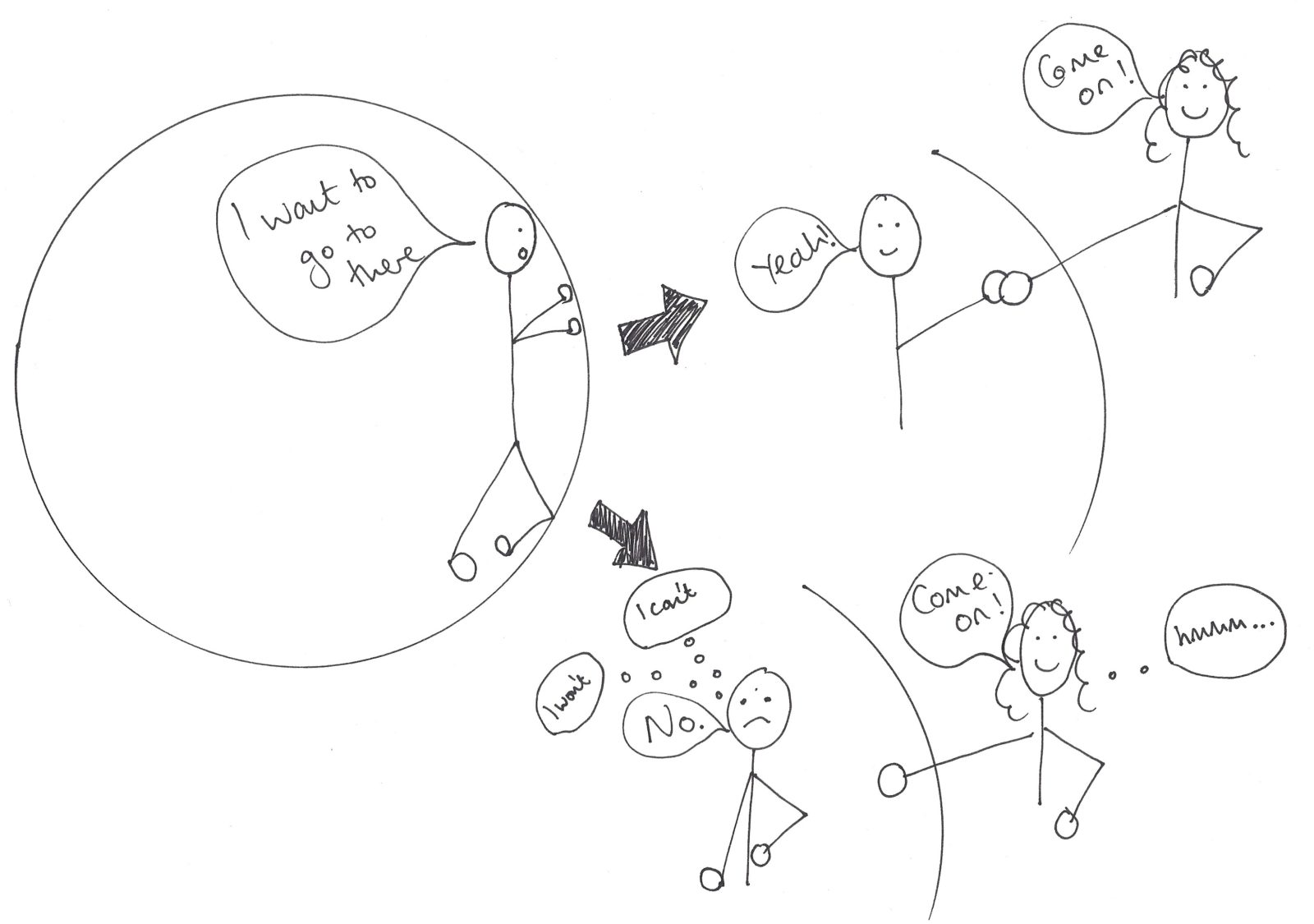
Option 3 is the instant burst. You begin outside the bubble and immediately pop it. The student is perhaps shocked, gasping for air and might shut their eyes and hide.
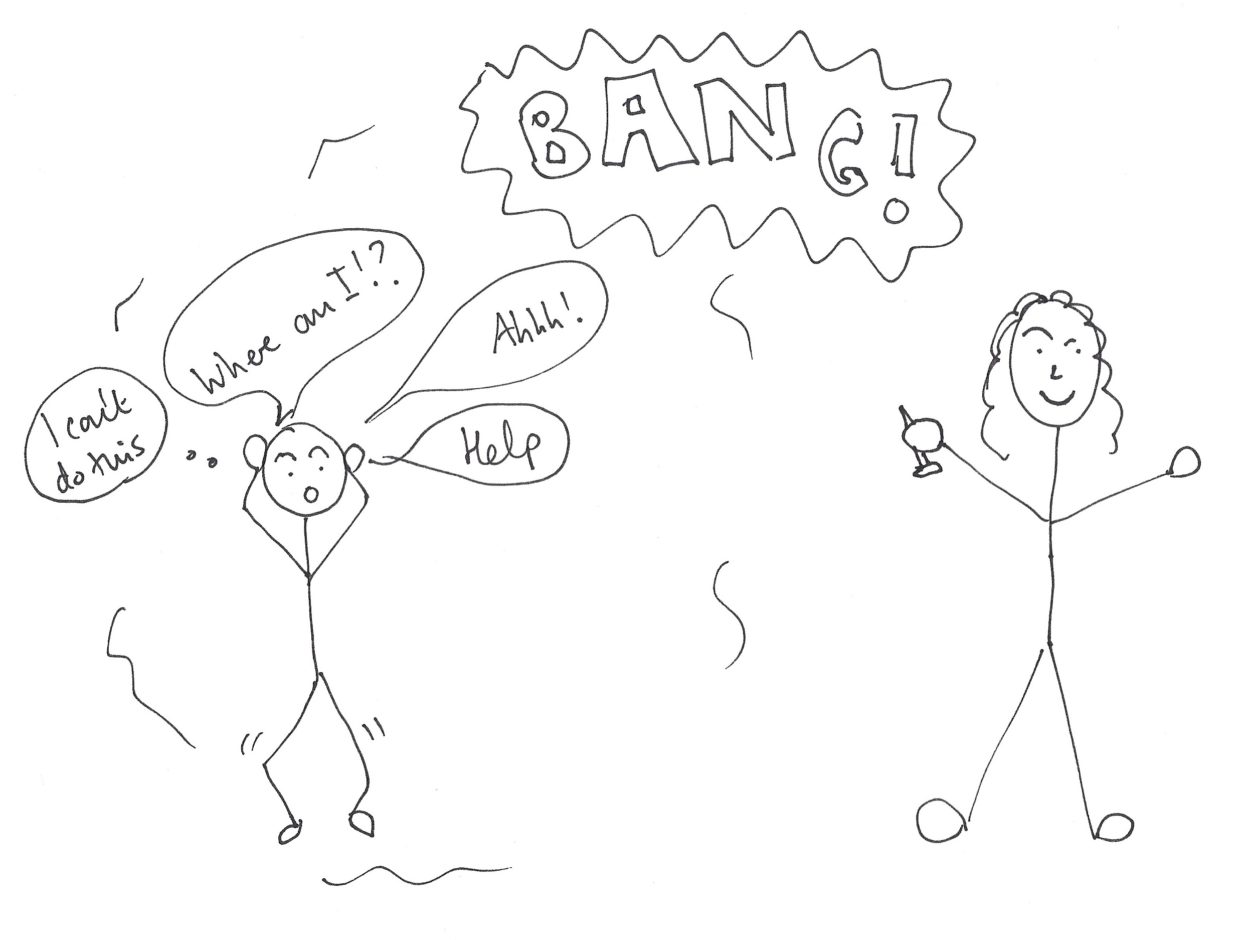
Alternatively, they may have just had the ride of their life, and are so grateful you finally showed them something they had never experienced.
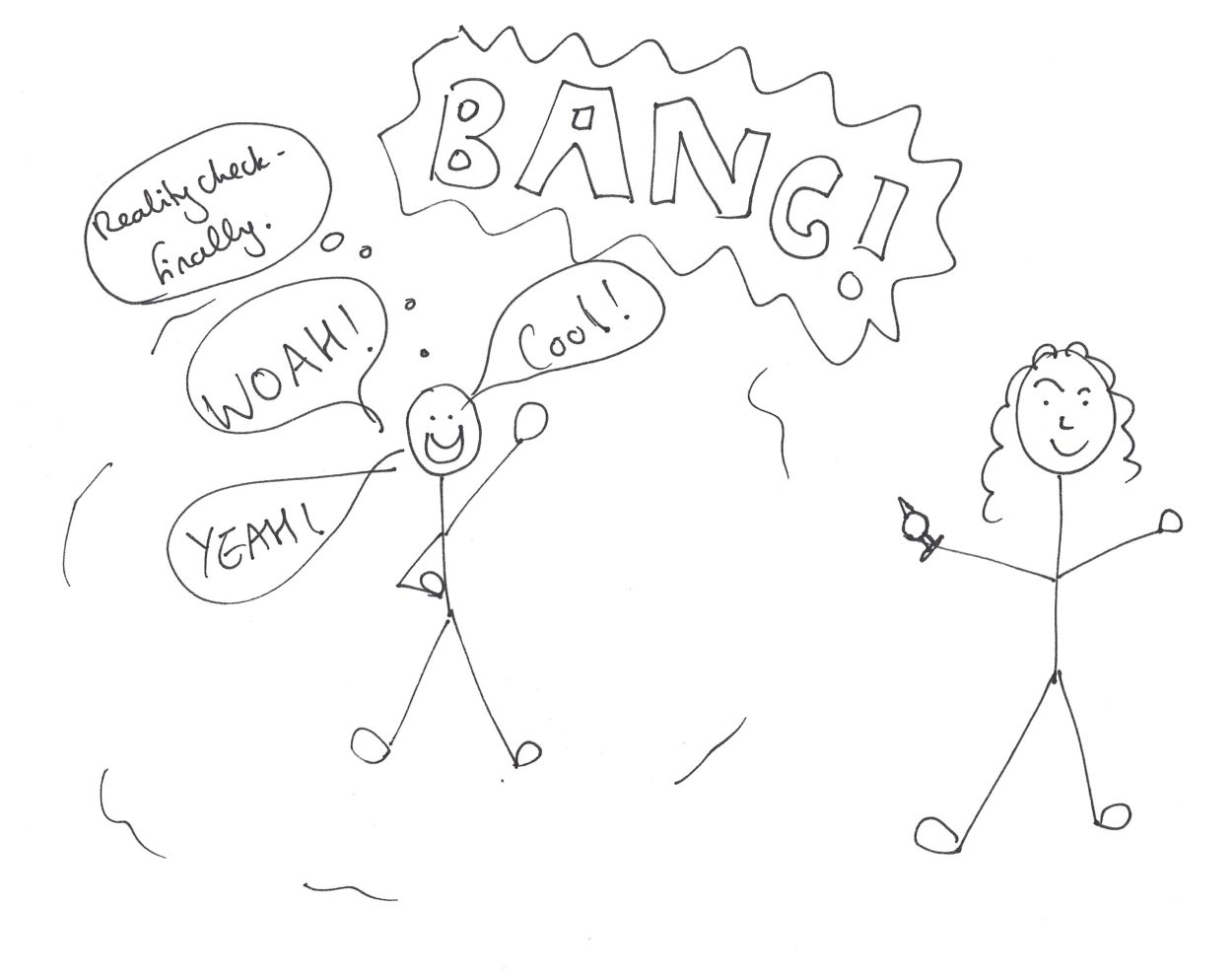
The burning question is which works best for whom and in what situations? I believe these options inherently have different status relationships attached to them. Option 1 sees the teacher level with the student. Potentially, they even choose a status lower than the student. I sometimes call this “pushing from the bottom”. From a position of support, familiarity and comfort, you gradually achieve more and more difficult material with the student. Often, they don’t realise it is happening. The language used is positive: “You have an excellent sense of rhythm in your footwork, let’s now put that rhythm into our upper body”. It may use minimisers and mediators: “We’d like to just try to work a little more on that body movement, if that’s ok?”. This approach can work so well for the under-confident student: someone keen to learn but fearful of taking risks. It can also work well for mixed level classes, so we can all grow together. It is also excellent for the self-motivated student: someone with a lot of body awareness, ability to self-criticise and a hunger for material. You can literally show them how they can continue to grow and this can last with them forever. However, sometimes students can feel like they “haven’t learned anything”. I think this all depends on how hard you push at the bubble. If they don’t provide any of the muscle, then they have no sense of achievement. For this to work, you can only show them the way and offer support and the student decides how hard they want to push for it. If the student doesn’t respect you, then they’ll let you do all the pushing and then ultimately blame you for it.
In Option 2, the teacher has a status just higher than that of the students. The teacher almost operates in isolation at the beginning, allowing the student to observe them, copy them, and form an opinion of them. The language is neutral, matter of fact. For example, in the challenge moment (when the hand is offered) the request may sound like this: “Now we’re going to do X”. In this moment the status gap can either increase or decrease. If the student steps up to the challenge, their status rises. You can level with them a little more, and play together. If they refuse the challenge in some way, e.g. they don’t “like” what you have asked, they think it is “wrong”, or it challenges their global belief (aka: “We don’t do this in our type of bubble”), then your status can drop to below theirs. At this moment, you have lost them and they need winning back. Their respect dips, they may start talking more when you are teaching, rolling their eyes and you may notice audible huffing and puffing. Alternatively, the challenge may not be accepted because the student didn’t understand, feels that they are “stupid’, that it is too hard for them etc. In this moment, your status becomes immediately higher than theirs. You may try to switch to flattery and supportiveness, but they already don’t trust you. Or maybe you just plough on without them and they feel left out, unsupported and unwanted.
In Option 3, the teacher opens with the highest status in the room. They will show something complicated, flashy or challenging and expect it to be recreated. They will likely use very direct, brusk language: “Ok, 3 swing outs and a circle – go.” Or, perhaps use humour to make fun of the students: “Wow, I thought you were advanced level, I suppose you’re not, haha!” They may be potentially being a little patronising to assert their status in the room: “Ok – you need slower music, that’s ok, I can do that for you.” For some students, this bubble popping moment is GOLD. Their focus rises, their hunger to learn increases, and they will take the harsh approach with relish. For other students, they can feel like they are looking at something completely alien which they can never achieve. They don’t understand what you are asking, and perhaps they aren’t interested in it. Perhaps their confidence is low, and being “told off” is not something they will respond to. Maybe they’ve had a bad day, and they don’t appreciate the snarky comments. It’s this kind of class where occasionally someone will get upset and leave. This approach requires that you have something the students really really want. If they really really want it, then they will often accept your rougher approach. But if you start to lose a lot of students, they’ll fight back, refuse to try things, ask a lot of pointed questions (e.g. the famous “Why are we doing this?”), eye rolling, walk out etc., and then you perhaps need to look at another option.
Probably the perfect class has elements of all three, or at very least the best teachers have the ability to dance between them when needed. I think my comfort zone is mostly Option 1. I have such a strong belief in positive reinforcement, and it’s the style which most uses that. I would argue that in school classroom settings, this is probably the most efficient way to get the highest number of students leveling up during a lesson. However. at Lindy Hop events, many people want to feel the struggle. They relish the burn of climbing that mountain. If you push them up it, they haven’t actually got what they came for: the FEELING of climbing.
I think that my greatest joy is the feeling of supporting the student’s climb. I love to feel that I have their back. I love to think that I can catch them if they fall, that I will hold their hand whilst they push back the boundaries of their bubble, that I will make them feel GREAT about all the amazing things they can do, and see them surprise themselves when together we can achieve even more. I probably enjoy teaching like this because this is what I enjoy as a student. I feel that when I am more supported, I can be much more self-critical and driven and also handle more criticism. So the most honest and genuine thing I can do is to teach with a student like me in mind. However, it obviously doesn’t work for everyone or in every situation, so my next challenge is working on breaking down the wall of my own bubble, and continuing to explore the other options.
So much this. Also the pictures are adorable!
As someone who has taken your classes I am always struck by how humble you are despite how talented you clearly are, regardless of your growing rockstar status. This has been the far and away reason why I recommend you as a teacher- because I can feel you by my side supporting me as I climb and work to burst the bubble.